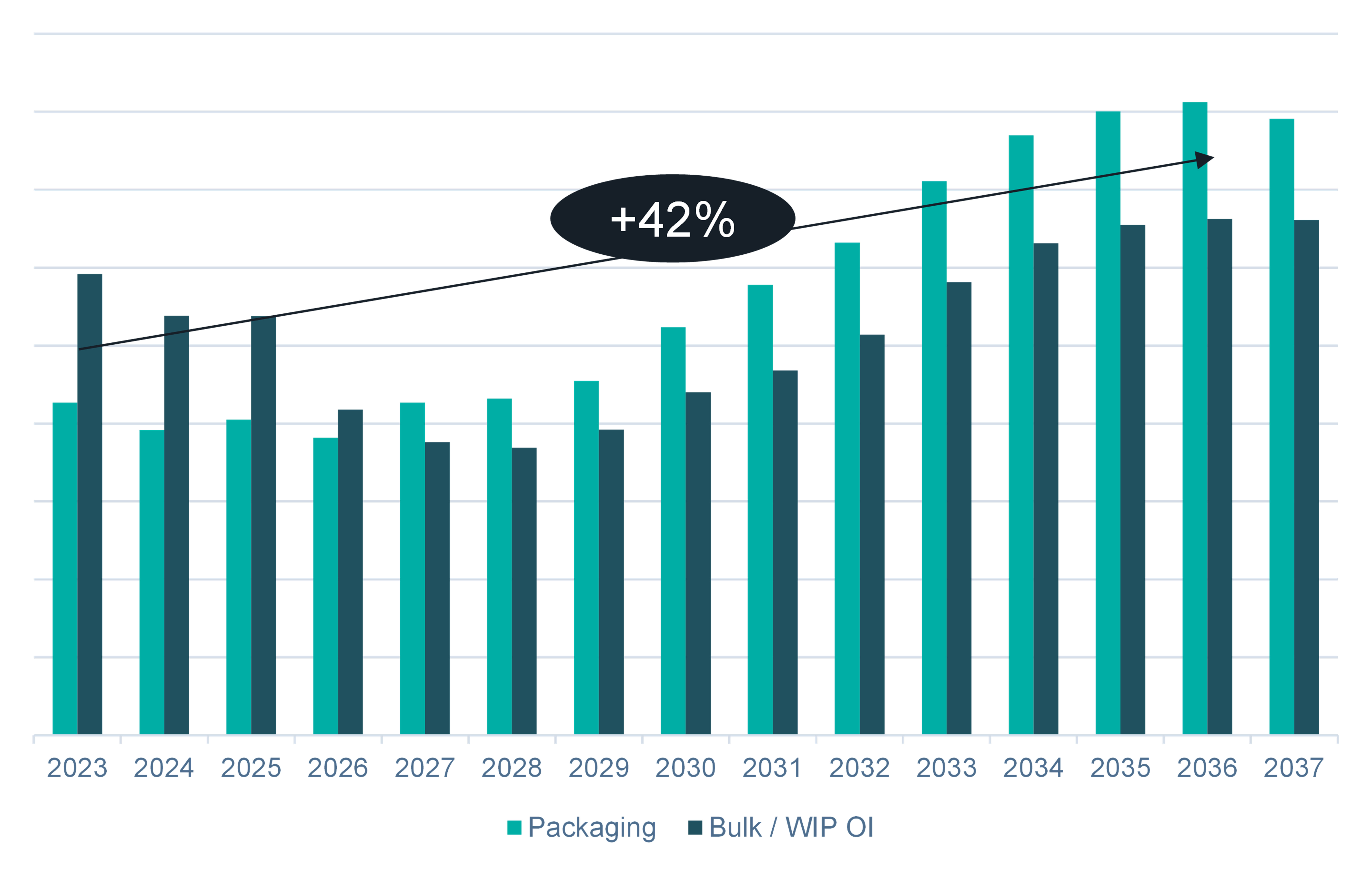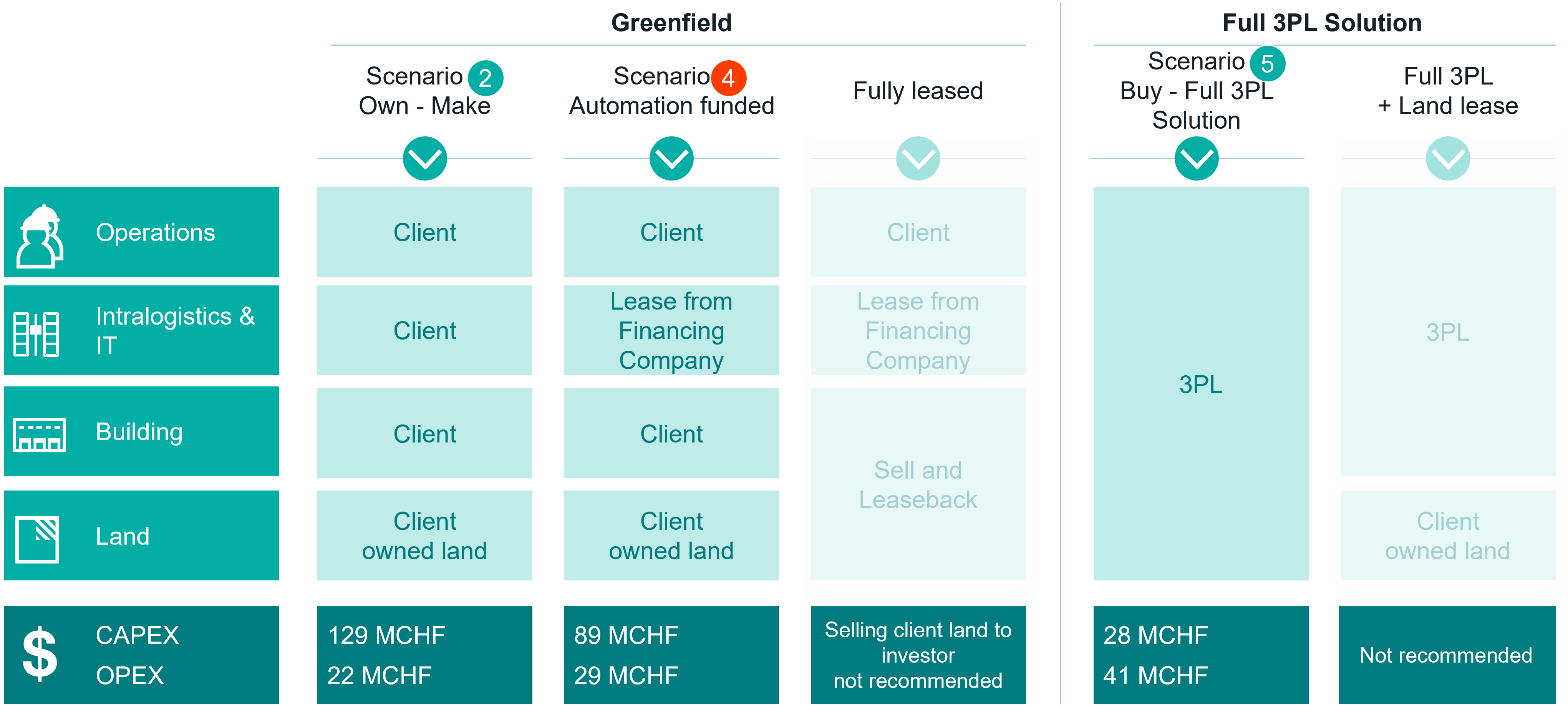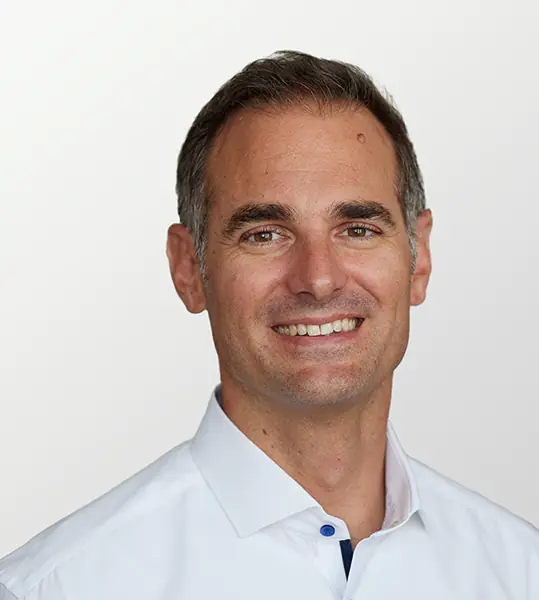Case Study: Greenfield Warehousing Strategy for a Global Healthcare Manufacturer
Future-Ready Logistics for the Healthcare Industry
A global healthcare manufacturer based in Switzerland faced growing logistics complexity across four manually operated satellite warehouses. With capacities projected to reach critical limits by 2028, and disruptions on the horizon due to escalating maintenance costs for outdated intralogistics infrastructures, the company sought to future-proof its supply chain with a new warehouse consolidation strategy.
Miebach was engaged to evaluate options, including a potential greenfield logistics hub on adjacent company-owned land. The objective included creating a scalable, efficient, and compliant logistics operation ready for future growth with a special focus of future automation potential.
Goals
Defining the roadmap for a scalable, future-ready warehouse and logistics strategy
The project objective was to define a scalable, cost-effective warehousing strategy that could support the client’s long-term growth and operational excellence goals. Miebach was engaged to determine future capacity and capability requirements, establish a robust planning baseline through infrastructure and flow analysis, and assess the feasibility of a greenfield solution on company-owned land by updating the legacy concept and providing indicative CAPEX and OPEX estimates.
In addition, modelling operating expenditures for multiple scenarios, benchmarking internal investment against third-party logistics (3PL) alternatives, and evaluating ownership and financing models to support scalability and risk mitigation were further customer requirements that Miebach was trusted with. The outcome was a set of data-driven, strategic recommendations designed to guide the client’s decision-making on warehouse consolidation, automation readiness, and long-term logistics performance.
Challenges
Overcoming capacity constraints and complexity in a fragmented warehouse network
The client faced increasing pressure from restricted warehouse capacity, potentially becoming bottleneck by 2028 due to business growth and increasing product variety. Rising operational and maintenance costs from outdated, manual logistics infrastructures were eating away efficiency and resilience. The fragmented setup, spanning four satellite warehouses across owned and rented sites, introduced complexity, elevated risk, and reduced overall performance. At the same time, the organization needed to evaluate how best to leverage its existing land to enable future expansion, incorporate state-of-the-art automation, and reduce long-term logistics risk through a more consolidated and future-ready solution.

Figure 1: Future Growth
Approach & Methodoloy
A data-driven warehouse consolidation and sutomation-ready design process
Given the number of stakeholders involved, Miebach's first step was to manage the complexity by applying a structured, data-driven methodology to redesign the client’s warehousing strategy. The process began with a comprehensive baseline assessment, including site visits, stakeholder workshops, and detailed flow and capacity analyses, to establish a validated planning foundation aligned with the businesses indicated growth.
Based on this, Miebach developed and modelled four future-state scenarios ranging from network refurbishment to full consolidation and complete 3PL outsourcing, as well as a greenfield design. Each scenario incorporated layout optimisation, cold chain integration, and automation readiness. A make-or-buy evaluation compared costs, service levels, and scalability of in-house operations versus 3PL alternatives. Financing options were supported by financial benchmarking and an assessment of ownership and leasing structures. This approach ensured clear, actionable insights for selecting the most viable long-term solution.
Recommended Solution
Consolidated Greenfield Warehouse with 3PL Offload
A hybrid strategy, centred on the development of a consolidated greenfield logistics hub, complemented by targeted 3PL outsourcing to manage non-core flows was recommended.
This solution’s building footprint replaces three existing warehouse locations with a single site with a roughly 13,900 sqm facility, designed to integrate ambient, cold, and freezer storage in an automation-ready layout, enabling higher efficiency, reduced handling, and streamlined flows.
With an estimated investment of ~130 MCHF, the design maximizes the use of available company-owned land, reduces overall footprint compared to the legacy network, and provides scalability to accommodate future growth and automation. The selective 3PL component minimizes operational complexity while maintaining control over critical flows, ensuring the client achieves both immediate efficiency gains and long-term resilience in its supply chain operations.
Results & Benefit
Unlocking cost savings, operational efficiency, and long-term supply chain resilience
Miebach’s recommended solution delivers significant benefits in terms of operations, finance and strategy, positioning the client for continued performance and flexibility in its logistics network. Scenario analysis confirmed the feasibility of a consolidated warehousing strategy offering clear operational, financial, and strategic advantages.
Cost Optimization
- Up to 14 MCHF in annual operational savings
- 30% reduction in logistics headcount through automation and consolidation
- Short payback period due to OPEX efficiency across scenarios
Operational Efficiency
- Increased storage capacity: 25,000 pallet spaces (ambient), 8,000 (cold), and 12,400 shelf locations
- Streamlined flows and layout effciency
- Improved service levels with fewer handovers
Strategic Flexibility
- Scalable Greenfield platform, providing an infrastructure ready for future automation and volume growth
- Hybrid solutions with partial 3PL offload reduce operational complexity
- Funding models identified, including leasing alternatives and investor-backed solutions

Figure 2: Scenario Analysis
This feasibility project established the foundation for a transformative warehousing strategy. By aligning infrastructure, automation, and cost-efficiency, the client is positioned to drive long-term value, supply chain resilience, and operational excellence.
Perspectives
Client and Miebach Perspectives
We knew our warehouse network was holding us back, but aligning our teams and agreeing on the right path forward felt like a huge challenge. Miebach helped us bring everyone to the table, cut through the complexity, and design a solution that gives us the space, flexibility, and resilience we need to grow. Now we have a clear, realistic plan, and the confidence to invest in our future."
XY, Customer
From the start, it was clear this project was about more than just a new building. It was about creating a logistics platform the client could rely on for years to come. Our role was to connect the dots between stakeholders, translate the business vision into a tangible plan, and ensure the solution was both feasible and future-proof. The result is a clear roadmap for a resilient, flexible, and efficient operation that can evolve with the client’s needs."
XY, Miebach
Are you planning a greenfield warehousing strategy or do you have questions or comments on this topic? Please do not hesitate to contact us!
Contact


